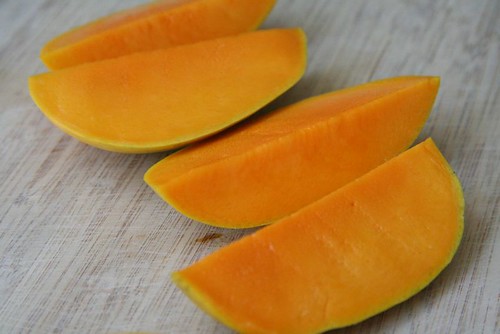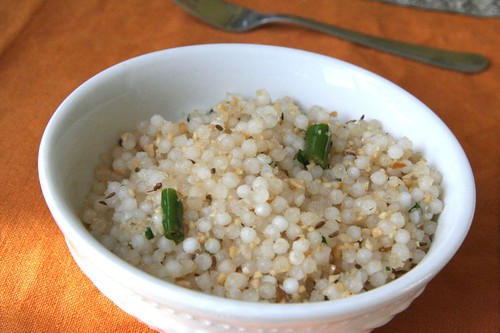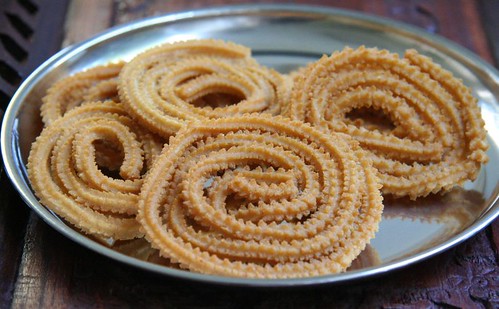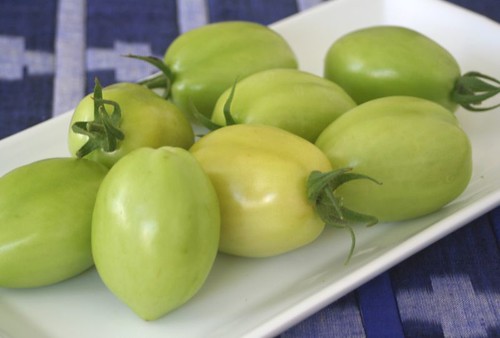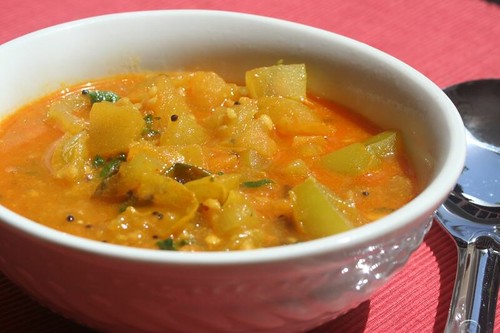When nature provides most of the flavor, all you need at the most is a little salt and pepper, and a perfect example of that is asparagus in springtime. A drizzle of olive oil clinches it further. Asparagus can be cooked in many different ways like lightly blanched, steamed, or sauteed, but my favorite method is roasting. And while roasted asparagus is wonderful on its own, there is something even better about pairing it with small or new potatoes.

Seriously good eating with a minimalist approach, this is one of my favorite things to make right after I return from the farmers market on weekends in spring for a meal that doesn't require too much effort.
I start the potatoes first because they take longer to cook, and while I put away the purchases and trim the asparagus to remove the lower woody end, it is usually about time to send those in to the oven for their sojourn. Once those are in, I start working on the rest of the meal. That could be soft scrambled or poached eggs with toast, or capellini, which cooks pretty quickly, tossed with some pesto and grated parmesan. The latter is especially wonderful in early summer, when basil starts to come along and we are not yet spring-ed out on asparagus. Sometimes, just soft polenta works beautifully too. So many easy combinations, none of which demand much precision.
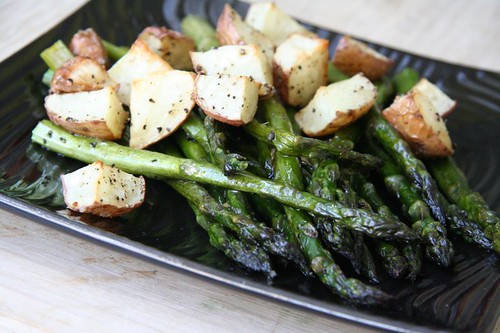
I realized after viewing the pictures that the plate should have been flipped since the light was coming in from the left, which would have highlighted the asparagus and the potatoes would have reflected less light. Always learning.
Roasted New Potatoes, Asparagus
Ingredients
new potatoes
a bunch of asparagus
coarse salt
black pepper, coarsely ground from the peppermill
a couple of tablespoons of olive oil
Method
Preheat oven to 375 degrees. If you are making a larger batch, then up it to 400 degrees.
Wash and clean the potatoes. If the potatoes are tiny, use them whole. If slightly larger, then halved, and if even larger, then quartered. You get the point. Rub them with olive oil, season with coarse salt and pepper, and place them skin side down on one side of a roasting pan or baking sheet.
After 20-25 minutes, repeat the oil, salt, and pepper for the asparagus, add them next to the potatoes, and continue baking for another 15-20 minutes depending on the thickness of the asparagus. For the ultra slim variety 10 minutes is enough. Roll them around once mid-way. Keep an eye on the roasting pan and adjust baking time accordingly. Ideally, but not necessarily, the potatoes and asparagus would be ready at the same time.

